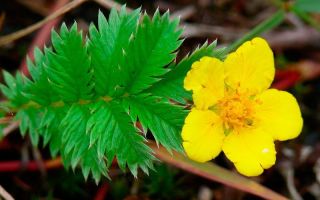Content
The medicinal properties of Potentilla goose and contraindications deserve careful consideration. The healing herb helps with many ailments, but it should be consumed in moderate dosages.
What it looks like and where it grows
Goose Potentilla (Potentilla anserina) is a perennial plant from the Pink family with a short dense rhizome and creeping shoots up to 70 cm long. The leaves of the grass are odd-pinnate, smooth and green above, heavily pubescent and whitish below. The stems and shoots are covered with short hairs, giving the cinquefoil a slightly silvery shade. From the beginning of summer, the plant bears small yellow flowers on separate long stems. Each bud consists of 5-7 petals.

The plant is widespread throughout the planet in temperate climates. You can meet a perennial in the European part of Russia and the Caucasus, in Siberia and the Far East. The grass chooses clay and sandy soils, roadsides and ravines, wastelands and wet meadows.
Chemical composition
Traditional medicine uses the green parts and root tubers of the plant for medicinal purposes. They contain:
- starch and proteins;
- tannins;
- vitamin C;
- bitterness and mucus;
- essential oils;
- quinic acid;
- pigments.
Potentilla goose has strong astringent and healing properties. It is used both externally and internally.
The healing properties of goose cinquefoil
Photos and medicinal properties of goose cinquefoil are of great interest in traditional medicine. When used carefully according to recipes, a medicinal herb:
- relieves spasms of smooth muscles and soothes pain;
- accelerates the outflow of bile and helps dissolve small stones;
- beneficial for colitis and gastritis;
- improves condition with severe menstruation in women;
- stops bleeding;
- has a fixing effect on diarrhea;
- promotes the elimination of edema;
- eliminates toxins and toxins from the body;
- fights inflammation and infections;
- strengthens the immune system;
- helps with nephritis and cystitis, removes sand from the kidneys;
- has a relaxing effect and eliminates insomnia and stress.
Cinquefoil can be used for seizures of various origins. Decoctions and infusions based on it treat dermatological problems, as well as wounds and burns.
Preparation and application methods
Traditional medicine prepares water infusions and decoctions, as well as ointments for local use, on the basis of a useful perennial. In all cases, the plant retains a maximum of valuable qualities when following proven schemes.
Decoction
A concentrated broth of goose cinquefoil is used for bleeding and intestinal disorders. It is prepared according to the following algorithm:
- Pour three large spoons of chopped roots into an enamel pan.
- Pour 500 ml of hot water.
- Heat over low heat for about a quarter of an hour.
- Cool and filter through cheesecloth.
It is necessary to take the broth on a full stomach, 50 ml three times a day.
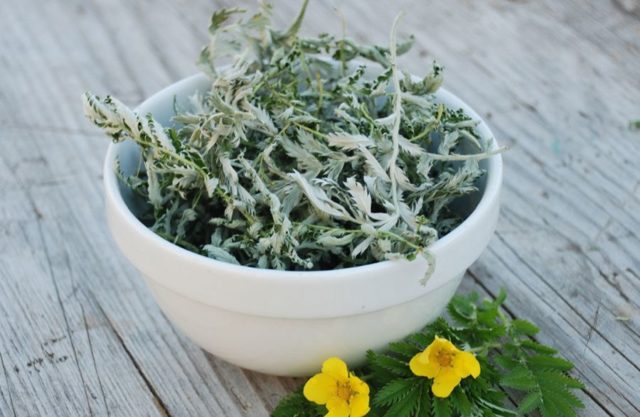
Tea
Goose Potentilla tea is prepared in much the same way as regular tea. The diagram looks like this:
- Dry leaves and stems of grass are crushed and poured into a ceramic teapot in a volume of 15 g.
- Pour 300 ml of hot water and cover with a lid.
- Leave for 10-15 minutes and filter through a strainer.
Dried Potentilla can be mixed with regular teas. In this case, both types of tea leaves are measured in 5-10 g.
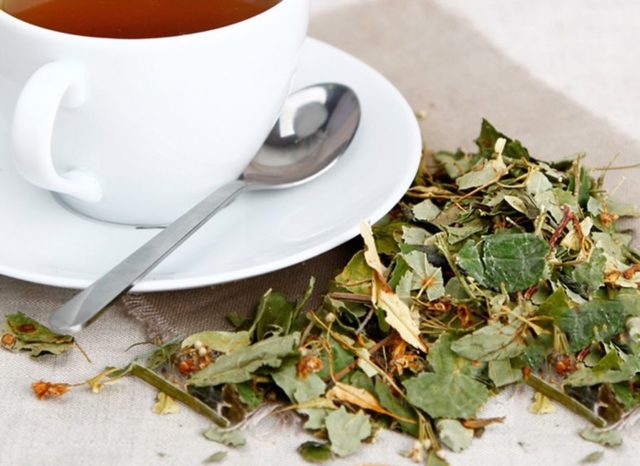
Fresh Juice
To normalize appetite, accelerate metabolism and with vitamin deficiency, you can use Potentilla juice. Get it like this:
- A fresh plant is scalded with boiling water and turned into a homogeneous mass in a meat grinder.
- The resulting gruel is squeezed through a fine sieve covered with gauze.
- Green juice is diluted with water in a 1: 2 ratio and placed on the stove.
- After boiling, boil for 3-5 minutes.
You need to take the remedy for 1/3 cup up to four times a day on an empty stomach.

Ointment
For joint ailments, wounds and bruises, you can prepare an ointment with cinquefoil. At home, they do it like this:
- Grind 100 g of the dried plant into powder.
- Stir with 600 g of butter or petroleum jelly.
- Slightly steam heated to a semi-liquid state and bring to full homogeneity.
- The mass is cooled and put into the refrigerator for solidification.
The product is evenly applied to injuries and sore joints, covering it with a bandage on top. Potentilla ointment is quite safe, so you can use it an unlimited number of times a day.
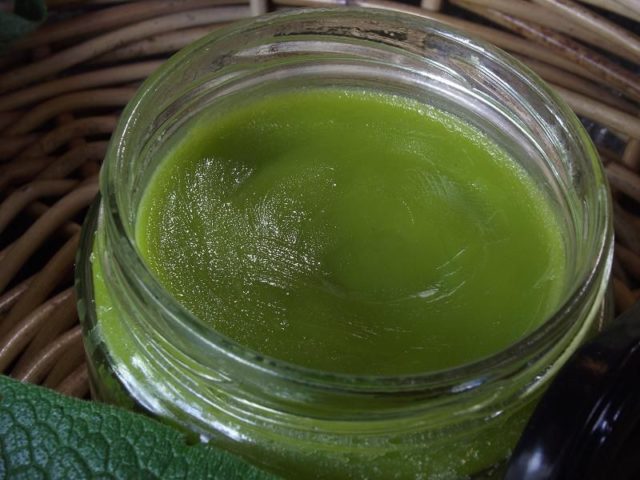
Application in traditional medicine
Cinquefoil is beneficial for diseases of the digestive tract, skin lesions, pain and cardiovascular ailments. In all cases, traditional medicine offers proven and easy-to-use recipes.
With gastritis
Healing cinquefoil relieves inflammation and soothes irritated mucous membranes. In case of stomach diseases, the infusion is recommended for preparation:
- The roots and stems of Potentilla are crushed in a volume of 20 g.
- Pour 1 liter of boiling water into a thermos.
- Leave under the lid for an hour.
The filtered infusion is taken three times a day, 70 ml each. In total, therapy should be continued from two weeks to a month.
For wounds and cuts
Cinquefoil has good healing properties, disinfects damage and stops bleeding. For wounds, it is recommended to use compresses with useful herbs:
- Fresh stems and leaves are crushed.
- Measure 30 g of raw material and pour a glass of water.
- Boil for 20 minutes and filter.
In a warm remedy, you need to moisten a cotton pad or a piece of gauze and apply to the damaged area.
With tuberculosis
The antibacterial properties of cinquefoil alleviate tuberculosis and help relieve exacerbation of the disease. For therapy purposes, the following decoction is prepared:
- Pour 20 g of dried herbs with a glass of water.
- Keep on low heat for 15 minutes.
- Leave for two hours under the lid and filter.
You need to take the broth three times a day on an empty stomach. It is advisable to warm it up before use.
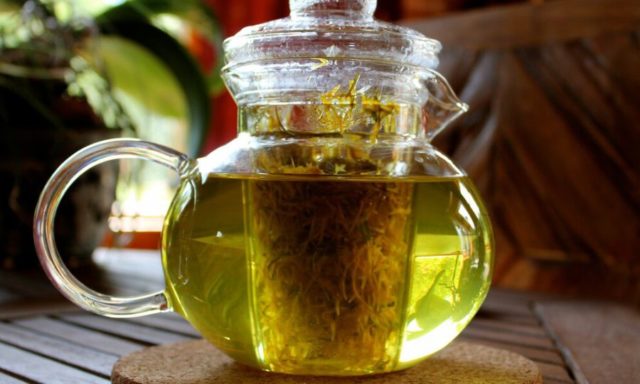
For stones in the gallbladder and bladder
Cinquefoil dissolves minor stones in the urinary tract and relieves symptoms of cystitis and cholecystitis.Traditional medicine suggests preparing such a remedy:
- Fresh stems and leaves of the plant are crushed and pressed through cheesecloth to obtain liquid.
- Raw materials are mixed in equal amounts with green rye juice.
They drink the remedy three times a day in a large spoon. It is necessary to take the juice between meals.
For painful periods
With heavy menstruation and pain in the lower abdomen in women, a decoction of goose cinquefoil seeds helps. The recipe looks like this:
- Pour about 10 g of seeds with a glass of warm milk.
- Boil on the stove for five minutes.
- Remove from heat and filter.
The cooled drink is taken half a glass twice a day. It is necessary to continue treatment during the period of critical days.
With diarrhea
Potentilla roots have good astringent properties. With an intestinal disorder, such a remedy is prepared:
- Measure 10 g of roots and pour 250 ml of boiling water.
- Warm up over low heat for about a quarter of an hour.
- Remove from the stove and leave for 20 minutes.
The strained agent is taken 30 g twice a day until you feel better.
With uterine bleeding
The astringent properties of Potentilla help with bleeding in women. Traditional medicine advises this recipe:
- Goose cinquefoil in a volume of 10 g is poured into 1 liter of hot liquid.
- In a water bath, incubated for 15 minutes.
- Cool and filter through cheesecloth.
Drink the broth half a glass three times a day. It is important to keep in mind that uterine bleeding can indicate serious health problems. If the discharge continues, you need to see a doctor.
With hypertension
Cinquefoil reduces blood pressure and is used in the complex treatment of hypertension. In the initial stages of the disease, such a remedy helps well:
- The stems, roots and flowers of Potentilla are crushed in equal amounts.
- Measure 30 g of raw materials and pour a glass of boiling water.
- In a closed form, leave at room temperature for eight hours.
The filtered agent is taken three times a day, 70 ml on an empty stomach.
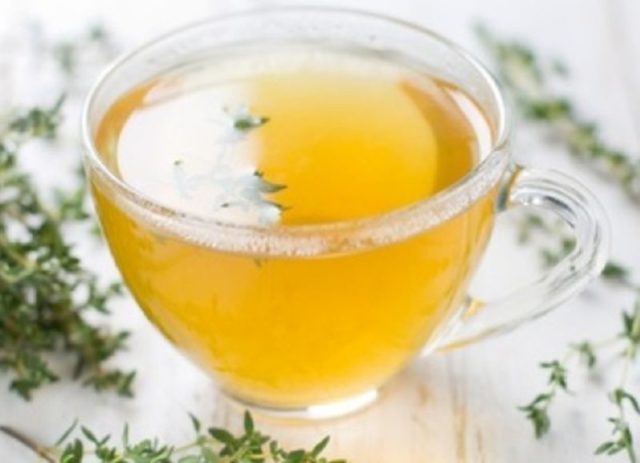
With bleeding gums
Boiled cinquefoil juice is used for dental diseases. The healing composition is done like this:
- Fresh grass is thoroughly washed and scalded with boiling water.
- Grind into gruel in a blender or meat grinder.
- Squeeze the vegetable juice from the resulting mass and fill it with hot water in a 1: 2 ratio.
- Boil over low heat for two minutes.
The finished broth is cooled to a warm state and used to rinse the gums. Also, the tool can wash out sores on the lips and cracks. Cinquefoil will speed up the recovery of the skin and prevent infection.
Contraindications to the use of goose cinquefoil
In some cases, cinquefoil can harm the body. It is not recommended to use funds based on it:
- with chronic hypotension;
- in the acute phase of hyperacid gastritis;
- with high blood clotting and a tendency to thrombosis;
- with varicose veins;
- with large stones in the kidneys, gall and bladder;
- with exacerbation of pancreatitis and stomach ulcers;
- with individual intolerance.
During pregnancy, the medicinal goose cinquefoil does not have strict prohibitions on its use. However, before using it, you should consult a doctor so as not to accidentally harm the body. During lactation, plant-based preparations should not be used, they can cause allergies and intestinal colic in the newborn.
Collection and procurement
For medicinal purposes, all parts of cinquefoil are used - from rhizomes to seeds. Collect raw materials during the warm season.Stems, leaves and buds are cut in May, during the period of maximum freshness, they are sent for seeds after ripening at the end of August. The roots are harvested from the second half of summer until late autumn, the greatest amount of valuable substances is concentrated in them after the plant has retired.
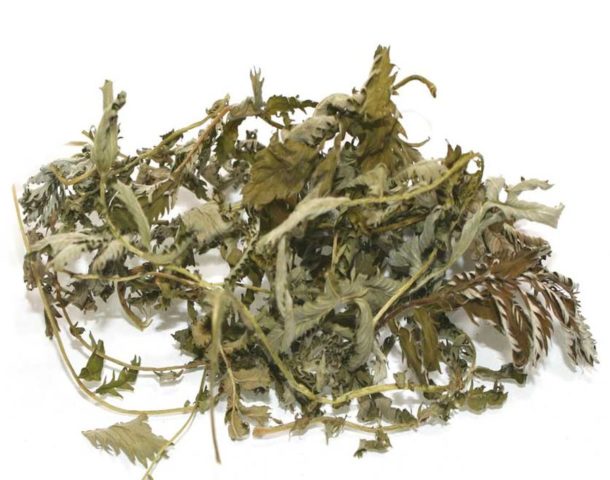
To collect medicinal Potentilla, they choose an ecologically safe place, located far from major roads, factories and factories. The prepared raw materials are washed and dried in the fresh air or in a ventilated room. In both cases, it is necessary to lay out the leaves, stems and roots so that the direct rays of the sun do not fall on them.
The processed parts of the plant are packaged in glass jars or paper bags. You need to store cinquefoil in a dark place with a low level of humidity at a temperature below 25 ° C.
Conclusion
The healing properties of goose cinquefoil and contraindications are in demand for digestive ailments, bleeding and skin damage. On the basis of the herb, ointments and preparations for internal use are prepared. The plant rarely brings harm, but it should be used in moderate dosages.

